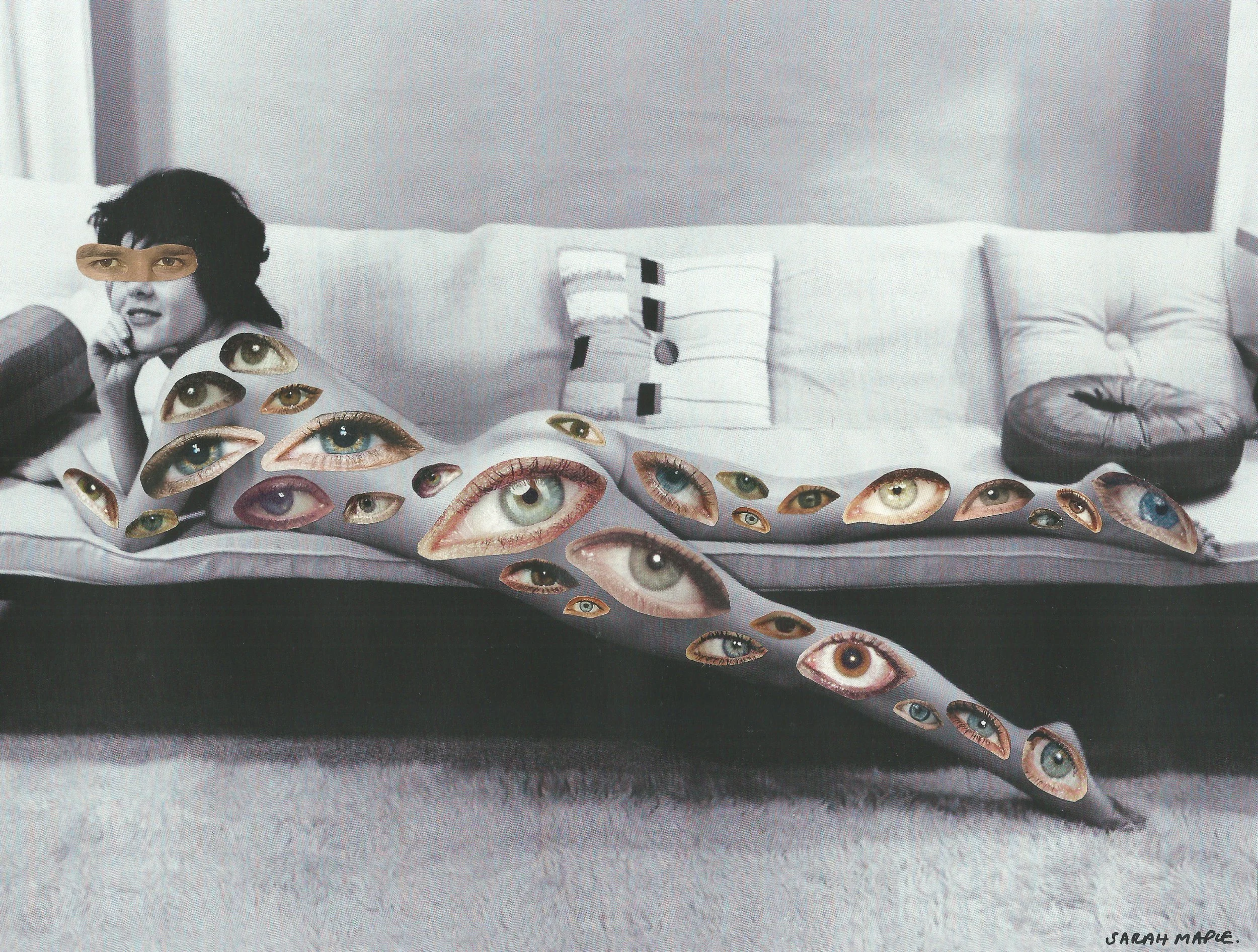Humour and Satire with Sarah Maple
Words by Ashley Scott | Photography by Paul Phung
While tackling topics and issues that might fall on the heavier side of life, British artist Sarah Maple still manages to elicit a grin, a nudge and a smirk that you can feel arising when experiencing her work. For Maples, the balance of subject matter, serious topics, weighty discussion and humor intersect, all elements relying on each other for the story she’s weaving to succeed.
“I use a lot of humour and satire in my work – this is such an important tool for me to get a message across. Invite them in with a laugh, and that gets the conversation going. Art for me is all about starting conversations. Because I tackle many political or controversial issues, too, I feel like I have to get that absolutely right,” Maple explains.
“I think I am constantly fighting and trying to get across things that are taboo and not spoken about – and from different perspectives,” adds Maple, whose work careens from self-portraits and photography to painting and literature, to name but a few of the forms it takes. “For me, the idea or concept comes first, then I figure out the best way to communicate that, so I am willing to work in any medium.”
With her big and spectacularly coiffed hair, Maple features front and center in many of these works, emphasising the personal place they spawn from and focusing directing on the woman at the core of the story being told. “I had, in recent years, stepped away from it but I find myself returning to myself as a subject again,” she reveals. “I think a simple facial expression in a self-portrait can say so much, and I often can’t explain what that facial expression is to another person.”
When Maple does opt to remain behind the scenes, her work draws from the world’s constant conversations on notable women across the spectrum of life and notoriety. “I do tend to cover a lot of political issues, such as feminism, equality, identity and migration, which is highly influenced by my mixed cultural upbringing as a Muslim,” says Maple.
A work titled If I loved you it was because of your hair, now you no longer have hair, I don’t love you anymore features that indelible image of Brit- ney Spears shaving her head – it’s a clear example of Maple’s use of pop culture and women’s treatment in the public space as a vehicle to further her messages. “These themes do tend to change, depending on what is happening in the world at the time, or with any particular personal things I’m going through,” she adds. “The personal is political!”
Sarah Maple, The Most Heightened State of Being Female No. 10, 2021. Courtesy of the artist.
Inspiration comes from all angles. Even being located outside of London’s arts hub, she explains, has had a unique impact: “I live in a new town be- tween London and Brighton. This town is very lacking in the arts and often people around here think art is not for them. Oddly, I find this atmosphere inspiring.”
Maple’s background and family history play a crucial role in the development of her work. As she tells it, the whole country provides great inspiration, all the way back to her family’s arrival to the UK: “My Mum’s side of the family came here from Kenya (via India) in the 1950s, and there is so much history in that which I love to reflect on, the good and the bad!”
One of Maple’s most identifiable pieces, Labour of Love, was recently transformed into a book, further solidifying her multifaceted approach. This installation hones in on her meditation on motherhood and the invisibility of women in the process of child-rearing. “I counted the number of times I fed my newborn baby over three months and this was 650 times exactly,” Maple recalls. “I then took a picture of myself and my baby, and screen printed this 650 times.”
Each of the hundreds of pieces featured in the installation show Maple covered in this screen-printed image, with everything from paint to nappies shielding her from view and underlining her sense of being hidden in motherhood.
“In each of the pieces I am covered but the baby is intact to represent the invisibility of the work mothers do,” she concludes. “It’s in works like these where I am trying to highlight an issue that is often unspoken.”




